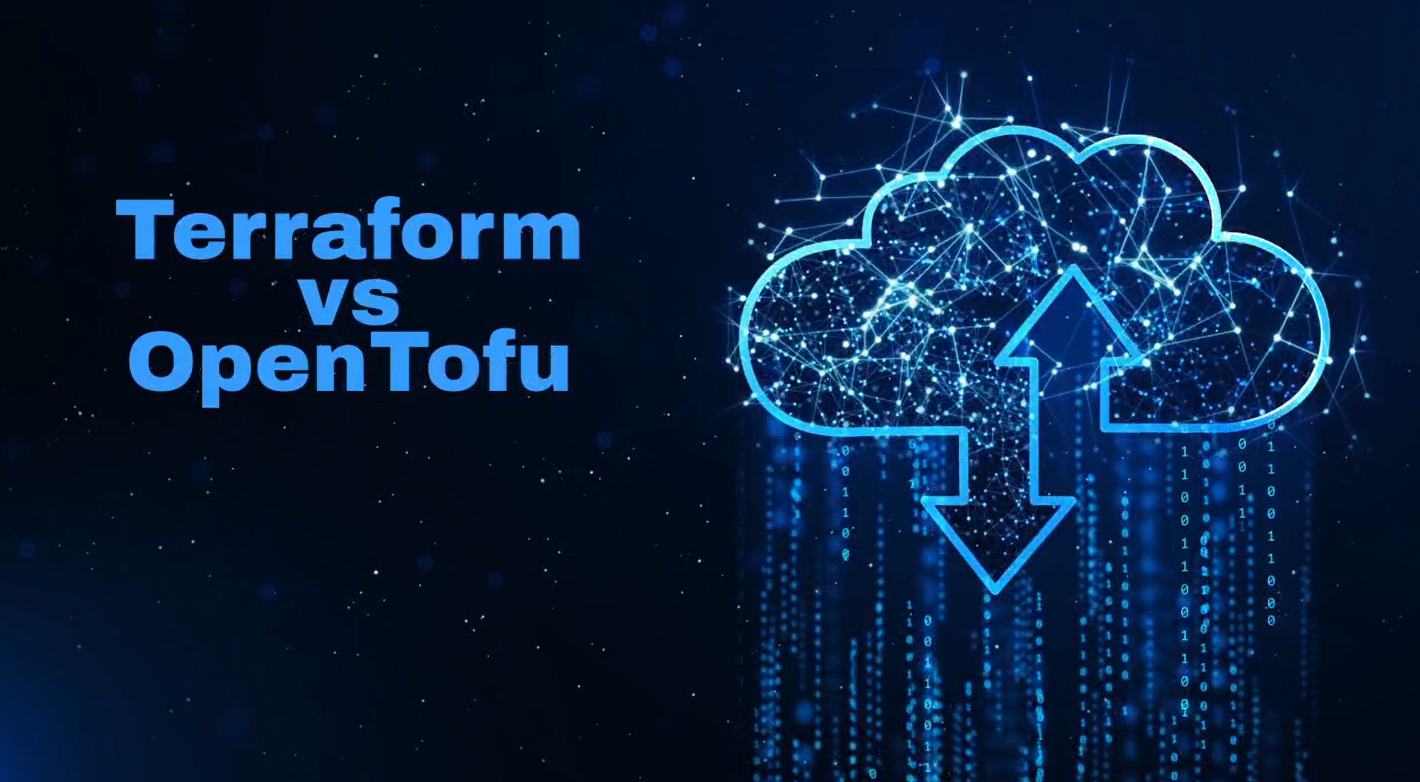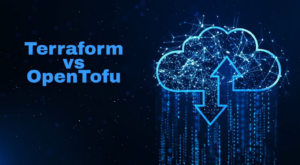In the realm of infrastructure as code (IaC), Terraform and OpenTofu have emerged as frontrunners, empowering developers and operations teams to manage cloud infrastructure efficiently. While both tools share the common goal of simplifying infrastructure provisioning and management, they differ in their licensing, community support, and future development direction, leading to distinct advantages and disadvantages. This article delves into a comprehensive comparison of Terraform vs OpenTofu, exploring their features, benefits, and drawbacks from the perspectives of developers, operations teams, and management.
Developer’s Perspective: Ease of Use, Community Support, and Future Development
1.Ease of Use:
For developers, ease of use is a crucial factor when choosing an IaC tool. Terraform offers a well-established syntax, extensive tooling, and modular design, making it user-friendly for developers familiar with programming concepts. OpenTofu, being a fork of Terraform, inherits this ease of use, allowing developers familiar with Terraform to transition seamlessly without significant syntax or functionality changes.
2.Community Support:
A thriving community provides invaluable support for developers, offering troubleshooting assistance, best practices, and advanced usage scenarios. Terraform boasts a large and established community, while OpenTofu’s community is rapidly growing and becoming increasingly active.
3.Future Development:
The future direction of an IaC tool is shaped by its development approach. Terraform’s development is driven by HashiCorp, its commercial entity, ensuring a consistent roadmap and enterprise-grade support. OpenTofu embraces a community-driven approach, allowing users to actively participate in shaping the tool’s future.
Operations Team Perspective: Reliability, Performance, and Integration
4.Reliability:
Operations teams prioritize tools that are reliable and can handle complex infrastructure requirements. Terraform’s proven track record and extensive user base provide assurance, while OpenTofu’s stable codebase and rigorous testing procedures ensure reliability.
5.Performance:
Efficient performance is essential for infrastructure provisioning and management. Terraform is known for its efficiency, while OpenTofu’s optimized codebase and efficient resource management practices demonstrate its ability to handle demanding workloads.
6.Integration:
Integration with existing workflows and tools is crucial for operations teams. Terraform offers extensive integration capabilities, while OpenTofu seamlessly integrates with existing tools and supports various integration protocols and plugins.
Management Team Perspective: Cost, Vendor Lock-in, and Long-Term Viability
7.Cost:
Cost considerations play a significant role in management decisions. Terraform’s commercial licensing introduces licensing costs, while OpenTofu, being entirely open-source, eliminates licensing expenses.
8.Vendor Lock-in:
Management teams seek to avoid vendor lock-in, which limits flexibility and can increase costs. Terraform’s proprietary nature introduces the risk of vendor lock-in, while OpenTofu’s open-source nature eliminates this concern.
9.Long-Term Viability:
Long-term viability ensures the tool’s continued support and development. Terraform’s mature product and strong support from HashiCorp suggest long-term viability, while OpenTofu’s active community and growing momentum indicate its potential for long-term success.
Comparison Table: Terraform vs OpenTofu
| Feature | Terraform | OpenTofu |
|---|---|---|
| Ease of Use | Well-established syntax, extensive tooling, modular design, comprehensive documentation | Drop-in replacement for Terraform, modular design, extensive documentation |
| Community Support | Large and established community, extensive documentation, tutorials, and support forums | Growing and active community, GitHub discussions, community forums, dedicated Slack channels |
| Future Development Direction | Proprietary roadmap, driven by commercial considerations | Community-driven approach, open-source ethos, encourages innovation |
| Reliability | Proven track record of reliability, extensive user base, rigorous testing procedures, continuous integration pipeline | Stable and reliable codebase, rigorous testing procedures, continuous integration pipeline |
| Performance | Efficient and scalable, proven performance under various workloads | Comparable to Terraform, optimized codebase, efficient resource management |
| Integration | Extensive integration capabilities, wide range of supported tools and plugins | Seamless integration with existing tools, support for various integration protocols and plugins |
| Cost | Commercial licensing costs, tiered pricing based on usage | Entirely open-source, no licensing costs |
| Vendor Lock-in | Risk of vendor lock-in, potential for increased costs and reduced flexibility | No vendor lock-in, freedom to choose and switch tools |
| Long-Term Viability | Mature product with established market share, strong support from HashiCorp | Promising future with active community, growing momentum, and strong foundation |
Terraform vs OpenTofu :Choosing the Right IaC Tool?
The choice between Terraform vs OpenTofu depends on the specific needs and priorities of each organization. Developers may favor Terraform’s established syntax and extensive tooling, while OpenTofu’s drop-in replacement nature and growing community offer a promising alternative. Operations teams can rely on both Terraform’s proven reliability and performance and OpenTofu’s stability and integration capabilities. Management teams will need to consider the cost implications of Terraform’s licensing compared to OpenTofu’s open-source nature, as well as the potential for vendor lock-in with Terraform versus the flexibility offered by OpenTofu. Ultimately, the decision between Terraform vs OpenTofu requires careful consideration of the organization’s technical requirements, financial constraints, and strategic goals.
If you are looking for an easy way to manage and automate your cloud infrastructure, Sailor Cloud is a good option to consider. To learn more about Sailor Cloud, please visit the Sailor Cloud website: https://www.sailorcloud.io/
automate your cloud infrastructure, Sailor Cloud is a good option to consider. To learn more about Sailor Cloud, please visit the Sailor Cloud website: https://www.sailorcloud.io/
To learn more about OpenTofu and Terraform, please visit their official blogs:
- OpenTofu blog: https://opentofu.org/blog/
- Terraform blog: https://www.hashicorp.com/blog/category/terraform/







